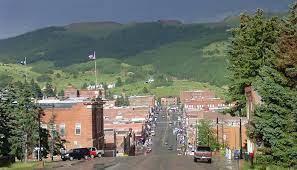In the heart of a small town, a group of individuals came together with a shared vision: to create a sustainable food system that would benefit both the environment and the local community. They were tired of relying on food that had traveled hundreds, sometimes thousands, of miles to reach their plates. They wanted to take control of their food supply and build a closed-loop system that generated no waste.
The group started small, with a few raised garden beds in a local park. They grew a variety of vegetables and herbs, experimenting with different techniques to ensure they were using the most sustainable practices possible. As the garden beds thrived, so did the enthusiasm of the community. People started donating time and resources to the project, and soon, the group was able to secure a plot of land on the outskirts of town to expand their efforts.
The plot of land was previously a neglected, barren field, but the group saw potential in its rich soil and sunny location. They worked tirelessly to clear the land, build compost bins, and install a rainwater collection system. They planted rows and rows of vegetables, including tomatoes, lettuce, carrots, and peppers. They also started an orchard, planting apple, pear, and peach trees.
As the produce grew, the community started to see the benefits of the project. They were able to buy fresh, local produce at affordable prices, and they knew exactly where their food was coming from. They could taste the difference in the quality of the produce, and they were proud to support a project that was benefiting the environment.
But the group didn't stop there. They knew that a truly sustainable food system required more than just growing produce. They started raising chickens for eggs and meat, and they also kept a few goats for milk. They used the manure from the animals to fertilize the gardens, and they fed the animals with food scraps from the local restaurants and grocery stores. Nothing went to waste.
The group also started a community kitchen, where they could prepare meals using the produce and animal products they had grown. They hosted cooking classes, teaching people how to make delicious, healthy meals using seasonal ingredients. They even started a food waste recycling program, where they collected food scraps from the community and turned them into compost for the gardens.
As the project grew, it became a source of inspiration for other communities. People from neighboring towns came to visit and learn from the group's success. They saw that it was possible to build a sustainable food system from scratch, and they were motivated to start their own projects.
In the end, the small community had achieved something incredible. They had created a closed-loop food system that generated no waste, produced fresh, healthy food, and supported the local economy. They had proven that a sustainable future was possible, and they had inspired others to follow in their footsteps.
As the project continued to gain momentum, the group realized that they could make an even bigger impact by sharing their knowledge and resources with others. They started hosting workshops on sustainable gardening, animal husbandry, and waste reduction. They also partnered with local schools to create educational programs for children, teaching them about the importance of sustainable agriculture and healthy eating.
The community's efforts did not go unnoticed. They were featured in local newspapers and magazines, and their project even caught the attention of national media outlets. The community received invitations to speak at conferences and events across the country, sharing their success story and inspiring others to create their own sustainable food systems.
As more people learned about the project, the demand for the community's produce and products grew. They started selling their goods at local farmers' markets, and even started a small grocery store that exclusively sold local, sustainable products. The profits from these sales were reinvested into the project, allowing the group to expand their efforts even further.
But the project was not without its challenges. There were times when crops failed, or when pests invaded the gardens. But the group always persevered, experimenting with different techniques and learning from their mistakes. They knew that building a sustainable food system required patience, dedication, and a willingness to adapt.
Years went by, and the project continued to flourish. The community had built something truly remarkable, something that had a positive impact on the environment, the local economy, and the health and well-being of its residents. The group had created a legacy that would inspire generations to come.
Looking back on their journey, the community felt proud of what they had accomplished. They had proven that a small group of committed individuals could make a difference, and that sustainable agriculture was not just a buzzword, but a viable solution to the challenges facing our planet. Their story was a reminder that when we work together, anything is possible.
The local community.
Fred.
Be the first to post a message!
